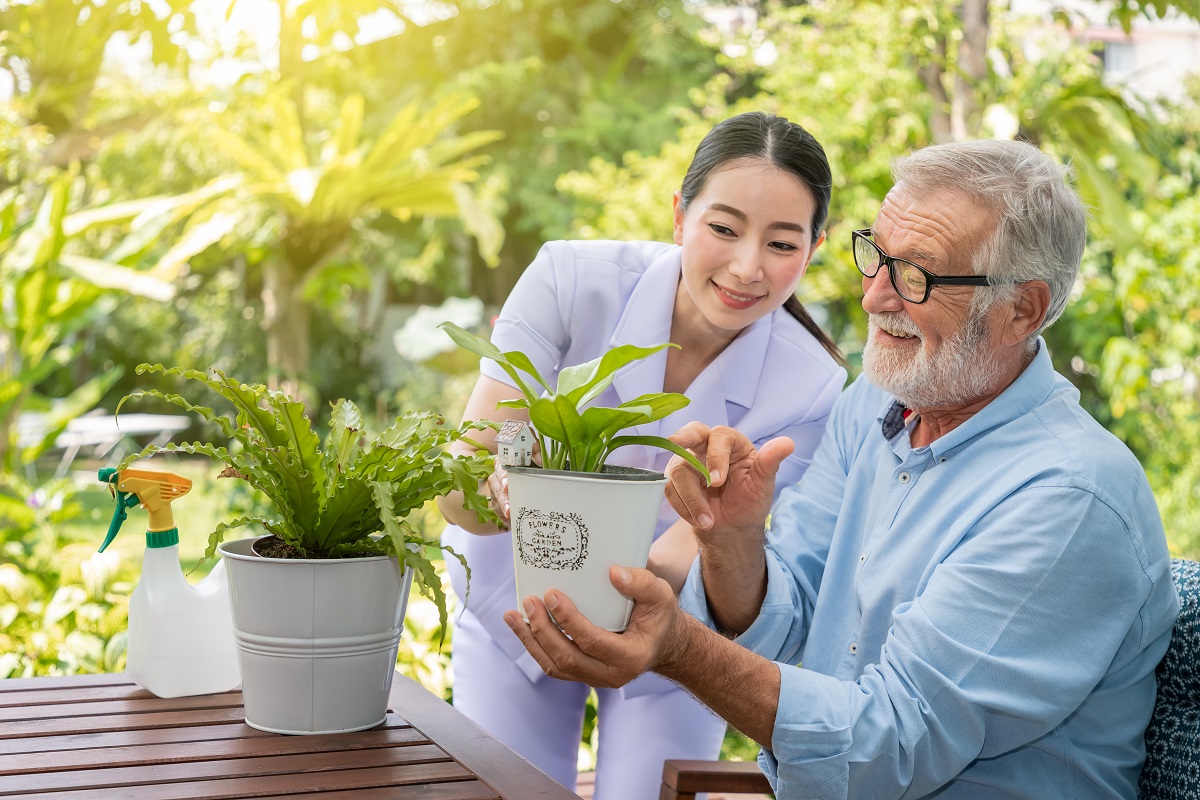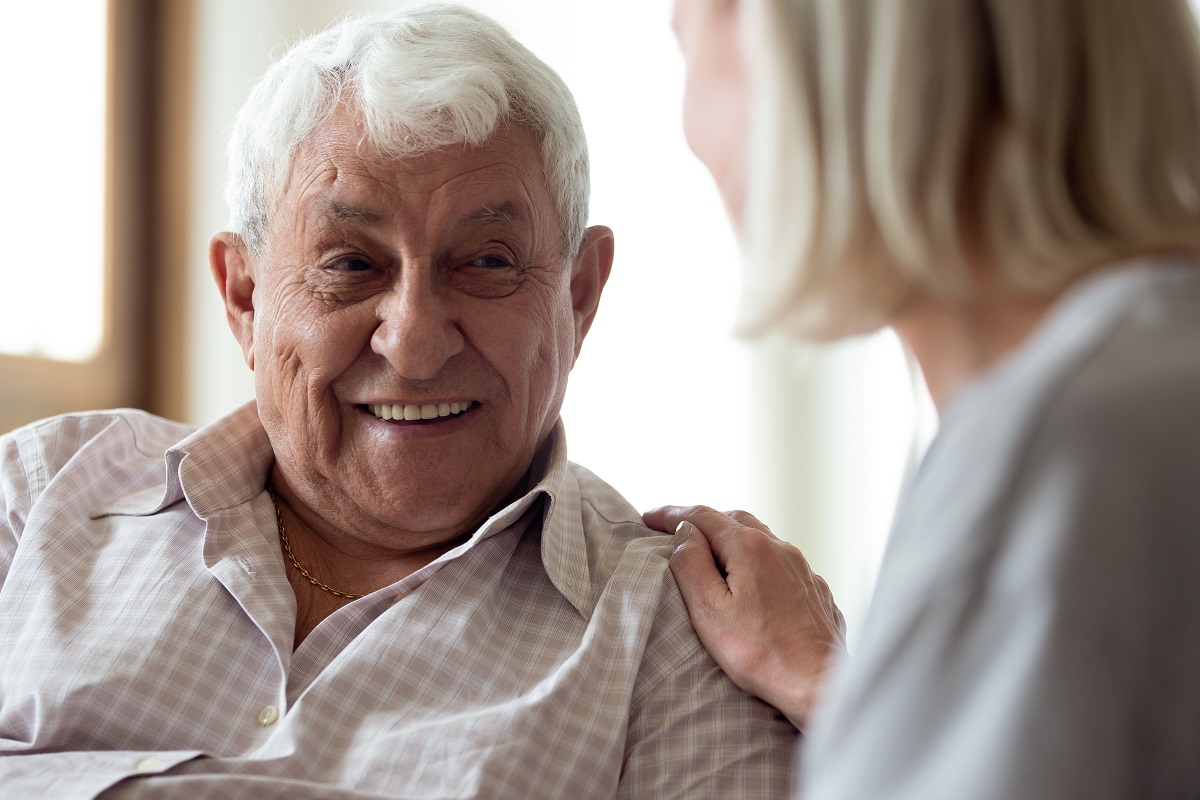The power of reminiscence therapy
Reminiscence therapy is an effective and enjoyable way to connect with a person who has dementia and to help manage some of the more distressing symptoms of the illness. Here’s what you need to know
In a nutshell:
While your loved one might not be able to remember what they had for lunch, they are very likely to remember their wedding day, the name of a favourite school teacher, or a childhood holiday. Reminiscence therapy uses this ability to recall events that happened long ago, even when short term memory is failing. It can also help to boost their mood and stimulate wider conversation. Anecdotal evidence suggests that stimulating long-term memory can also improve short-term memory and increase the self-worth and engagement of someone with dementia.
How reminiscence therapy works
As we age we have an increased tendency to remember things that happened to us between the ages of 10 and 30 years, with events from the late teens and early twenties remaining most prominent. Psychologists call this ‘the reminiscence bump.’ For people with dementia ‘reminiscence bump’ memories usually remain vivid (until their illness is very advanced), and can often be recalled quite easily with the use of some simple triggers.
What actually happens?
The carer, relative, friend or professional reminiscence therapist will start by showing the people they’re working with some key multi-sensory items designed to trigger memories. For example, a photograph of the Queen’s coronation, a 1950’s kettle, or an old fashioned egg whisk. She might also play a popular song from the 1940s, or show clips from a film of the same era. The items are then used to stimulate conversation and remind the person with dementia of their identity. If they’re in a nursing home, or have domestic professional carers, it’s also a great way for the staff to get to know them better, and gain an understanding of the richness and complexity of their lives before they had dementia.
Why it works
Reminiscence therapy allows someone with dementia to enjoy a good conversation and the benefits it brings, although it’s probably less beneficial to people with frontotemporal dementia (sometimes called Pick’s disease) or those in the later stages of dementia. Recalling positive memories makes everyone feel happy, and if you have dementia and are battling depression, good memories can become a powerful way to boost your mood. Reminiscence therapy can turn a ‘bad’ day into a ‘good’ day – or even a good week. Many people say their loved one seems brighter and more able to recall recent events from the past few days or weeks after a session of reminiscence therapy.
Can anyone do it?
Yes. Reminiscence therapy is often carried out in care homes, either in groups or in one-to-one sessions but you can also do it at home with a loved one. Training can help make the session more effective, but it isn’t by any means essential.
Do it yourself
1. Create a memory box (decorate it with old wallpaper from their house, or fabric from a favourite dress or curtains). If they have a favourite old handbag, use that.
2. Fill it with items that mean a lot. For example, a baby’s bib, a photograph, nuts and bolts. They can rummage in it whenever they want, but also make sure you spend some time with them talking about the items and what they mean.
3. If you’re struggling to find things, work out which years their ‘reminiscence bump’ happened and do some research. For example, if the 1940s were key years for them, what events might they remember? What clothes might they have worn? What would their kitchen have looked like? Create a scrapbook of images from the time, and visit junk shops or vintage shops for item inspiration.
What if they can’t remember?
In the later stages of the dementia journey reminiscence can become more difficult. Trying to get people with more severe memory loss to recall facts about their lives may make them feel uncomfortable and even upset. But it’s still possible to use reminiscence therapy by stimulating the senses. Here’s how:
1. Smell: Try spraying their favourite perfume around the room or on their clothes.
2. Touch: Try giving them a soft toy to stroke and cuddle or spend time playing with sand or play dough together – it could trigger lovely memories of childhood.
3. Taste: Try offering a favourite food or drink they used to really enjoy. For example, dandelion and burdock cordial, marshmallows, or an old fashioned rice pudding, could bring lots of pleasure.
4. Sound: Compile a CD of their favourite music or buy one linked to their favourite decade. You could load a personal playlist onto a USB stick: music players such as our Unforgettable Music Player & Digital Radio have a USB slot.
5. Sight: Try looking at a special reminiscence picture book together it could trigger memories of seaside holidays or favourite pets and bring lots of pleasure
Good to know
Reminiscence therapy is steadily growing in recognition as a way to help people with dementia. Some care homes and hospitals have even taken it a step further by creating a 1950’s living room or an old fashioned sweet shop on their site – with great results.
SHARE
Explore more




